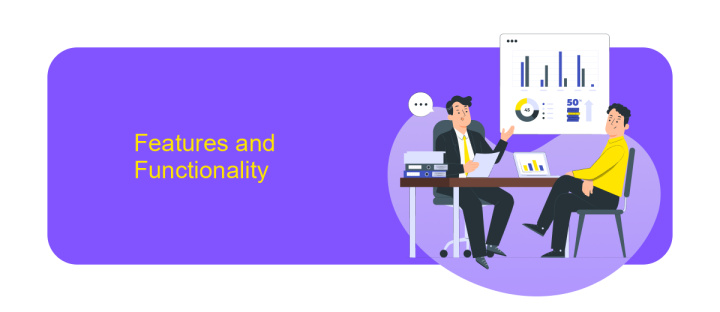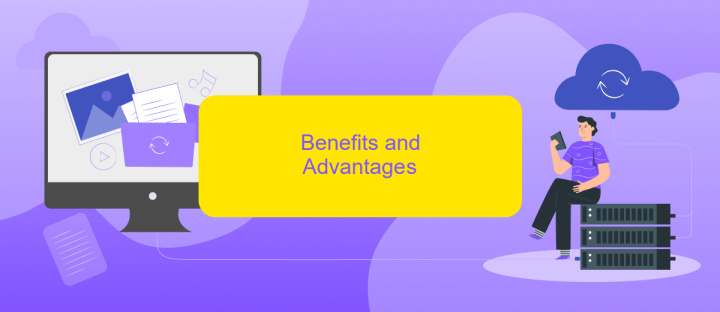Trading Automation Platform
In today's fast-paced financial markets, trading automation platforms have become indispensable tools for traders seeking efficiency and precision. These platforms leverage advanced algorithms and real-time data analysis to execute trades with minimal human intervention, reducing the risk of errors and enhancing profitability. By streamlining trading processes, they empower both novice and experienced traders to capitalize on market opportunities swiftly and effectively, revolutionizing the way trading is conducted.
Introduction and Overview
In the rapidly evolving world of financial markets, trading automation platforms have emerged as indispensable tools for traders and investors seeking efficiency and precision. These platforms leverage advanced algorithms and technology to automate trading processes, reducing human error and allowing for real-time market analysis. By integrating with various financial instruments and data sources, trading automation platforms provide users with the ability to execute trades at optimal times and prices.
- Streamlined trading operations, minimizing manual intervention.
- Enhanced decision-making through data-driven insights and analytics.
- 24/7 market monitoring and execution capabilities.
- Customizable strategies tailored to individual trading goals.
- Risk management tools to safeguard against market volatility.
As financial markets continue to grow in complexity, the demand for sophisticated trading automation platforms is set to rise. These platforms not only democratize access to advanced trading strategies but also empower users to stay competitive in an ever-changing landscape. By harnessing the power of automation, traders can focus on strategy development and optimization, ensuring they remain at the forefront of the financial industry.
Features and Functionality

The Trading Automation Platform offers a comprehensive suite of features designed to streamline and enhance your trading experience. Users can benefit from advanced algorithmic trading capabilities, allowing for automated execution of trades based on predefined strategies. The platform supports a wide range of financial instruments, providing flexibility and diversity in trading options. With real-time data analytics and customizable dashboards, traders can make informed decisions quickly and efficiently. The user-friendly interface ensures that both novice and experienced traders can navigate the platform with ease.
Integration capabilities are a standout feature, enabling seamless connectivity with various third-party services. The platform supports integration with popular trading tools and APIs, allowing for enhanced functionality and expanded trading opportunities. For those looking to simplify the integration process, services like ApiX-Drive offer automated solutions to connect different applications effortlessly. Security is paramount, with robust encryption and compliance with industry standards ensuring the safety of user data and transactions. Overall, the Trading Automation Platform provides a powerful and versatile environment for optimizing trading strategies and maximizing profits.
Benefits and Advantages

Implementing a trading automation platform can significantly enhance the efficiency and effectiveness of trading operations. By automating routine tasks, traders can focus more on strategy and less on manual processes, leading to improved decision-making and potentially higher returns.
- Time Efficiency: Automation reduces the time spent on repetitive tasks, allowing traders to execute trades faster and more efficiently.
- Consistency: Automated systems operate based on predefined rules, ensuring consistent trade execution without human error.
- 24/7 Operation: Unlike human traders, automated platforms can operate around the clock, capturing opportunities in global markets regardless of time zones.
- Data Analysis: These platforms can process vast amounts of data quickly, providing insights and analytics that support informed trading decisions.
- Risk Management: Automated trading systems can implement risk management strategies consistently, helping to protect against market volatility.
Overall, a trading automation platform not only streamlines operations but also provides a competitive edge by leveraging technology to optimize trading performance. As the financial markets evolve, such platforms become increasingly vital for traders seeking to maximize their potential in a dynamic environment.
Considerations for Implementation

Implementing a trading automation platform requires careful planning and evaluation to ensure it meets the specific needs of your organization. The first step is to clearly define the goals and objectives you wish to achieve with automation. This will guide the selection of the right platform and features that align with your trading strategy and business requirements.
Next, consider the technical infrastructure and compatibility of the platform with your existing systems. Assess the integration capabilities to ensure seamless data flow and communication between various components of your trading environment. This will minimize disruptions and enhance overall efficiency.
- Evaluate the platform's scalability to accommodate future growth and increased trading volumes.
- Ensure robust security measures are in place to protect sensitive data and transactions.
- Consider the level of customization available to tailor the platform to your specific needs.
- Review customer support and training resources to facilitate a smooth transition and ongoing usage.
Finally, involve key stakeholders in the decision-making process to gain insights and build consensus. This collaborative approach will help identify potential challenges and opportunities, ensuring a successful implementation that delivers long-term value to your trading operations.


Conclusion and Future Prospects
The development of a Trading Automation Platform marks a significant advancement in the financial technology sector, offering traders enhanced efficiency, accuracy, and control over their trading strategies. By automating routine tasks and providing real-time data analysis, these platforms empower users to make informed decisions swiftly, minimizing human error and maximizing profitability. As the financial markets continue to evolve, the integration of artificial intelligence and machine learning within these platforms will further enhance predictive capabilities, offering traders a competitive edge.
Looking ahead, the future of Trading Automation Platforms is promising, with the potential for seamless integration with other financial services and platforms. Tools like ApiX-Drive can facilitate these integrations, allowing for a more streamlined and cohesive trading experience. By connecting various applications and automating data transfers, such services can enhance the functionality and reach of trading platforms. As technology advances, the focus will likely shift towards greater customization and user-friendly interfaces, ensuring that both novice and experienced traders can harness the full potential of automated trading solutions.
FAQ
What is a trading automation platform?
How does a trading automation platform work?
What are the benefits of using a trading automation platform?
Can I integrate a trading automation platform with other tools and services?
What skills do I need to use a trading automation platform effectively?
Apix-Drive is a universal tool that will quickly streamline any workflow, freeing you from routine and possible financial losses. Try ApiX-Drive in action and see how useful it is for you personally. In the meantime, when you are setting up connections between systems, think about where you are investing your free time, because now you will have much more of it.

